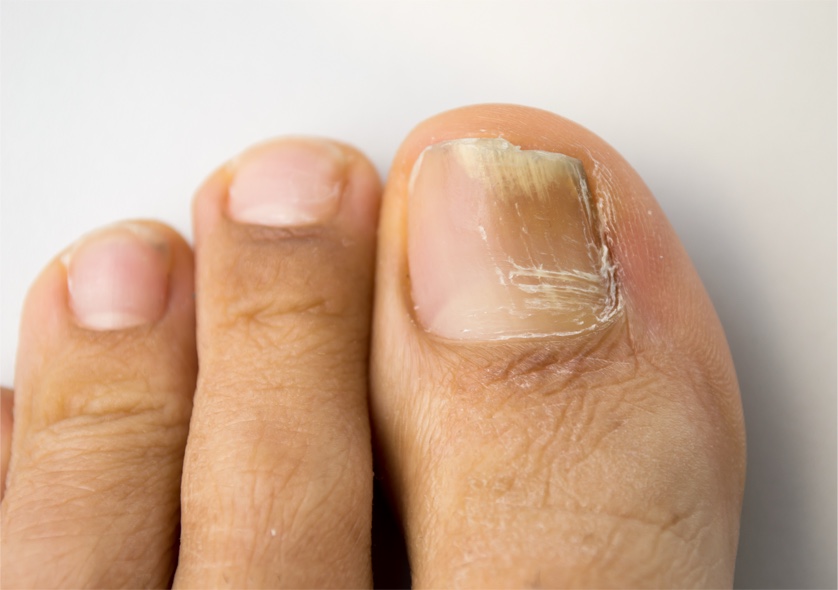Introduction
Nail fungus, medically known as onychomycosis, is a surprisingly widespread condition. This infection can invade any part of the nail, resulting in noticeable changes such as discoloration, thickened nails, and even detachment from the nail bed. While often dismissed as purely cosmetic, nail fungus can affect a person’s overall well-being and confidence. For those experiencing it, the condition may cause physical discomfort and social unease.
To address nail fungus effectively, understanding its underlying causes and manifestations is crucial. In this article, we’ll delve into the triggers, warning signs, diagnostic methods, and a range of treatment options, empowering you to take charge of your nail health.
What is Nail Fungus?
Nail fungus is an infection caused primarily by dermatophytes, a group of fungi that thrive in warm, moist environments. Other types of fungi, including yeasts and molds, can also contribute to this condition. Nail fungus can affect both fingernails and toenails, although toenail infections are more prevalent due to the darker and more humid conditions found within shoes.
Importance of Addressing Nail Fungus
Ignoring nail fungus can lead to more severe complications, including pain and secondary bacterial infections. Additionally, visible fungal infections can affect self-esteem, making individuals reluctant to wear open-toed shoes or partake in social activities. Therefore, addressing nail fungus promptly is essential for both physical and emotional well-being.
In this article, we will explore the causes of nail fungus, identify its signs and symptoms, discuss diagnostic approaches, and review treatment options. Finally, we will offer tips on preventing nail infections to help you maintain healthy nails.
Causes of Nail Fungus – Overview
Risk Factors
1. Poor Hygiene: Neglecting proper nail care can create an environment conducive to fungal growth. Regular washing, drying, and trimming of nails are crucial.
2. Humidity: Fungi thrive in warm and moist conditions. Environments such as swimming pools, communal showers, and damp footwear can increase your risk of developing nail fungus.
3. Age: As we age, our nails become thicker and more brittle, making them more susceptible to infections.
4. Underlying Health Conditions: Individuals with diabetes, weakened immune systems, or circulatory problems are at a higher risk for developing nail fungus.
Situational Triggers
Certain activities can elevate your chances of contracting nail fungus. For instance, swimming in public pools or using communal showers can expose you to fungi. These environments often harbor spores that can easily invade your nails.
Going to Nail Salons
While nail salons can provide a lovely pampering experience, they also pose a risk for nail infections if proper hygiene practices are not followed. To minimize risks, ensure that the salon uses sterilized tools and adheres to sanitation protocols.
What are Signs of Nail Fungus?
Common Signs
Recognizing the signs of nail fungus is the first step toward effective treatment. Common indicators include:
– Color Changes: Infected nails may appear white, yellow, or brown.
– Thickness: The infected nail may become thicker than usual.
– Texture: A fungal infection can cause the nail surface to become rough or brittle.
– Shape: The nail may become distorted or develop an irregular shape.
Other Symptoms
In addition to visible changes, nail fungus can cause discomfort and even pain, especially if the infection progresses. You may also notice loose nails, which can be particularly distressing.
Diagnosis of Nail Fungus
If you suspect a fungal nail infection, it is crucial to consult a podiatrist for an accurate diagnosis. A podiatrist will typically perform a thorough examination of the affected nails and may take a sample for laboratory testing to confirm the presence of fungi.
Distinguishing Nail Fungus from Other Nail Disorders
It’s important to note that other conditions, such as psoriasis or bacterial infections, can mimic the symptoms of nail fungus. This is why seeking professional help is essential for proper diagnosis and treatment.
When Should You Seek Professional Help?
If you notice persistent changes in your nails or experience pain and discomfort, it’s time to consult a podiatrist. Early intervention can prevent the infection from worsening and improve your chances of successful treatment.
Overview of Treatment Options for Nail Fungus
Over-the-Counter Treatments
Several over-the-counter antifungal creams and solutions are available. These products can be effective for mild infections, but they may take time to show results. Follow the instructions carefully for the best outcomes.
Prescription Medications
For more severe cases, prescription medications may be necessary. These can include oral antifungal medications, which can be more effective in treating deeper infections. Always consult a podiatrist for guidance on the most suitable treatment options.
Home Remedies
Many people explore home remedies, such as essential oils, in hopes of finding a natural cure for toenail fungus. While some anecdotal evidence supports their use, scientific backing is limited. Always consult with your podiatrist before trying any home remedy.
Regrowth of Nail
After treatment, be patient, as nail regrowth can take several months. It’s important to understand that even with successful treatment, the appearance of the nail may not return to its original stateimmediately. Regular follow-ups with a podiatrist can help monitor progress.
Conclusion
Nail fungus is a common, yet manageable condition. By understanding its causes, recognizing the signs, and seeking proper diagnosis and treatment, you can effectively combat this infection. Remember that proactive nail care and regular check-ups are vital to maintaining healthy nails.
If you are experiencing symptoms of nail fungus, don’t hesitate to reach out to a podiatrist. Taking charge of your nail health now can prevent complications in the future. If you are looking for effective solutions to nails damaged by fungus, consider exploring products like PROclearz Fungal Shield to help combat fungal infections or BRITE NOW to help improve the appearance of damaged nails.
References
1. American Academy of Dermatology. (n.d.). Nail Fungus.
2. Centers for Disease Control and Prevention (CDC). (n.d.). Fungal Nail Infections.
3. Mayo Clinic. (n.d.). Nail Fungus: Symptoms and Causes.
4. WebMD. (n.d.). Toenail Fungus: Causes, Symptoms, and Treatment.
